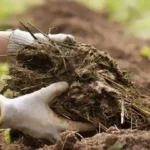You’ve sown your seeds, watered the garden, added nutrient-rich compost, and are becoming more excited with each passing day as you watch your plants stretch for the sky. Good on you for achieving success! But you now have a problem; how to get rid of fungus in vegetable garden that has sprouted in your soil and threatening the health and vitality of your garden. So how do you quickly reclaim what’s rightfully yours so you don’t see your plants go south faster than a duck in winter.
Fungi is prevalent in nearly all garden soil and won’t be easily eliminated. And that’s OK because some fungi play a crucial role in your garden’s health and plant development. But, unfortunately, others wreak havoc on your budding harvest. Some of the best ways to lessen fungi’s destructive tendencies are:
- Remove the affected plant and clear garden debris.
- Apply natural remedies such as baking soda, 3% hydrogen peroxide, garlic paste, cinnamon, or apple cider vinegar.
- Solarize your growing area with greenhouse plastic before your growing season begins.
- Rotate your crops from season to season.
- Use organic copper fungicides.
- Apply synthetic chemicals to your plants.
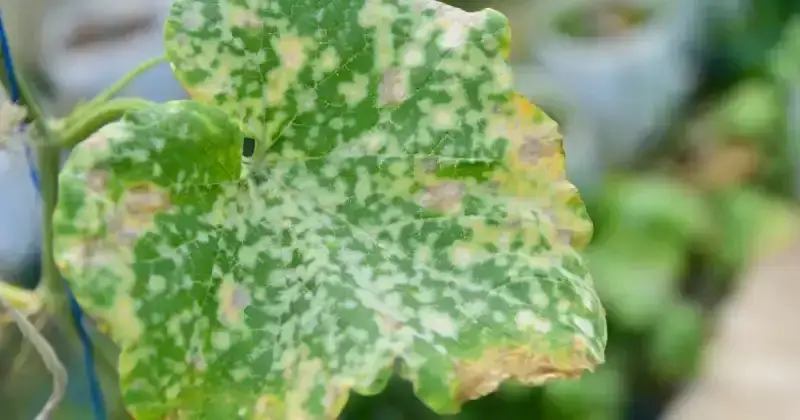
In this article, we dive deep into the best practices to keep harmful fungi at bay in your garden, help you achieve a healthy network of beneficial fungi, and detail specific methods you can use to identify and tackle stubborn fungi invading your space.
Remember, if you don’t get a handle on invasive fungal infections, you’ll be looking at a limited harvest at best and dead plants at worst. So, it’s best to plan and learn what to do now and determine how to care for your garden’s soil fertility before this serious issue risks the health and vitality of your crops.
Humble Highlights
- Save money by knowing precisely what anti-fungal treatment you need so you can rest assured harmful fungi can be treated appropriately in your garden.
- Discover how fungus invades your garden by understanding the 3 most common culprits even seasoned gardeners may miss to seize the opportunity to get your green space back in order.
- Easily identify the prevalent fungal diseases you will likely face AND how to reclaim your growing space BEFORE seeing signs of fungal damage.
- Save time by choosing the best, most proven methods of treating fungal invasions in your garden so you can fight back effectively with natural and synthetic treatment options!
What Is A Fungus
Fungus, also known as fungi, are a natural part of healthy ecology and thrive in different types of soil around the globe and feed on organic matter. Fungus creates a harmonious relationship with your vegetable plants by breaking down organic material and releasing vital nutrients into the soil which your crops need to grow. Unfortunately, while many fungi are incredibly beneficial to plant health, some, such as Pathogenic fungi, can be downright destructive to garden plants.
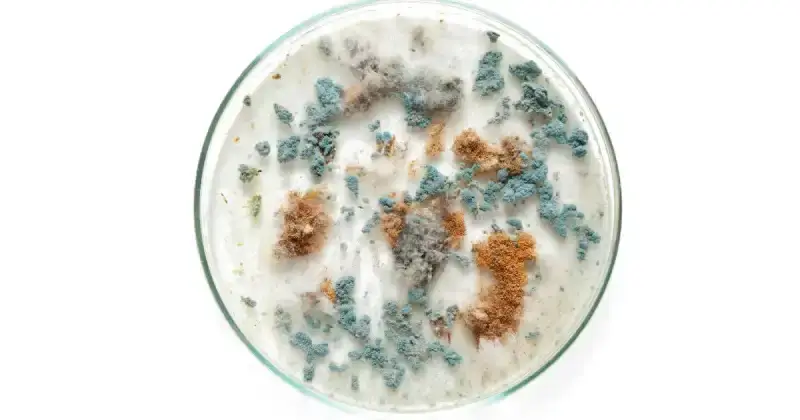
Fungi are heterotrophs, meaning they cannot create their food source. Instead, they seek carbon food sources to satisfy their needs to propagate. Fungi are excellent decomposers and grow atop your garden’s soil and feed on plant “litter” that falls and accumulates on the ground. If you have a pile of wood chips or leaves sitting idly by in your garden, these are also two excellent places fungi will thrive.
The key to dealing with fungi in your vegetable garden is encouraging healthy fungi growth while mitigating the harmful varieties from getting out of control and running amok within your soil and on your plants. 1
Fungi cannot photosynthesize, meaning they cannot use the energy of the sun to make their own food. Instead, fungi need a host plant to absorb nutrients. To obtain these nutrients, fungi grow root-like structures called hyphae, which attach to the host plant and absorb these vital nutrients. This transfer of nutrients from the soil to fungi to plants is a symbiotic relationship called a mycorrhizae network and creates a harmonious interconnected balance within your garden.
What Causes Fungus In Soil
Fungus is omnipresent and is found both in soil and air, no matter if your garden is inside or out. Fungal spores float through the air, and upon landing in your garden, an environment ripe with ideal growing conditions, begin to breed and increase rapidly. Once established, beneficial fungi can help protect your plants by thwarting certain diseases and protect them by absorbing harmful toxins your plants would otherwise soak up to their detriment.
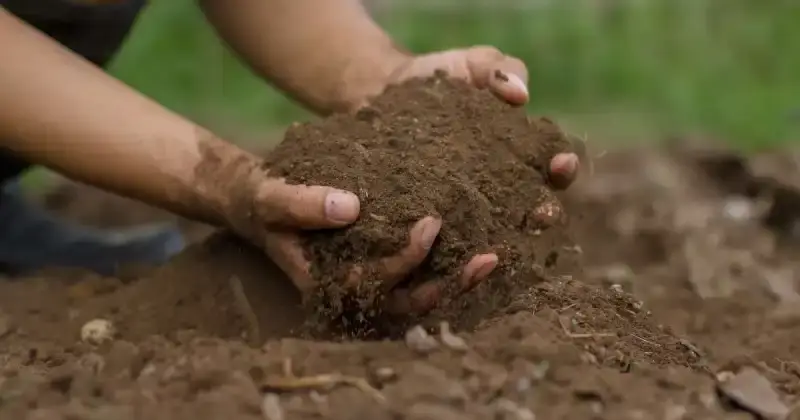
Because fungi are naturally present in all soil, you can breathe a sigh of relief knowing that finding fungus in your garden is perfectly normal. However, some circumstances can cause harmful fungi to take hold and flourish in your soil, causing blight, powdery mildew, root rot, and wilt disease, to name a few. 2
As with most protective measures in the garden, prevention is the best method to ensure damaging fungi don’t invade your edible Eden. However, if harmful fungi become a reoccurring problem, below are three of the most common culprits likely causing their resurgence and some easy remedies on how to fix them.
Too Much Soil Moisture
Fungi thrive in damp conditions. As a gardener, striking the perfect balance of moisture in your garden can be challenging but not impossible. Overwatering and saturating your soil, especially in a poorly draining garden, provides an environment that may flourish with colonies of unwanted fungi.
The best way to check to see if your crops need watering is to stick your index finger straight down into the dirt, about six inches away from the plant’s base, so as not to disrupt the delicate root structure forming just under the soil.
If the top of the soil is dry, cracked, hard, crumbly, or feels dry to the touch, it is time to water. However, the soil needs ample time to drain if it appears dark and feels wet, muddy, or squishy.
Aside from ensuring you are not overwatering your crops, it’s also vital to apply the water at the base of the plant, not from overhead. Most fungi have more difficulty germinating and spreading on the plant’s stem and leaves if they remain dry.
Of course, you can’t control the weather, but you have control over your watering hose or any drip irrigation you install. So do yourself a favor and keep the leaves and stems of your crops as dry as possible.
Because watering frequency is a common question among gardeners, I found this short video that helps demonstrate this simple technique of checking the soil with your finger, along with some additional sage advice.
Unbalanced Soil Community
As mentioned above, the interconnected network of fungi, plants, and trees in your yard and garden is called the mycorrhizae network. This network exists right under your feet and is where individual plants, bacteria, and fungi meet and exchange water, nutrients, and vital minerals.
And although the average home gardener may only want to grow some tomatoes, cucumbers, and a few herbs, it’s essential to understand just how vital the mycorrhizae network plays in your garden because it’s imperative to encourage the right kind of fungal growth in your garden, no matter how small.
To have a successful garden, you must have beneficial fungi growing and thriving within your soil while mitigating the bad. If you don’t have this crucial fungal balance, you’re leaving your garden open and vulnerable to pathogenic (unwanted) fungi, which will begin damaging your plants.
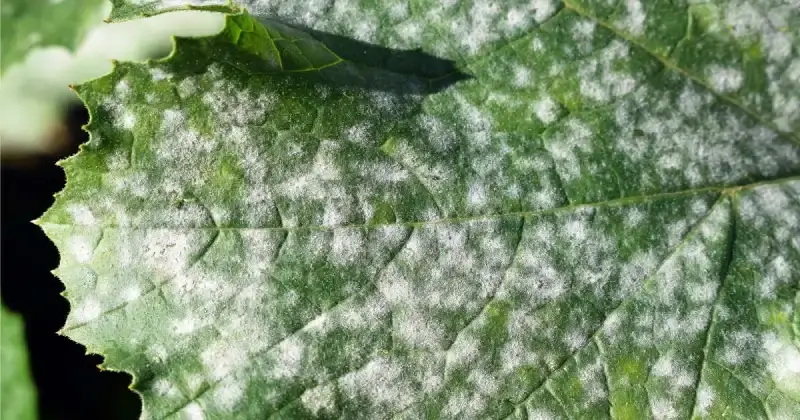
Growers who rely too much on heavy tilling, chemical pesticide applications, herbicides, fungicides, and synthetic fertilizers can unknowingly contribute to an unbalanced soil community in their garden. That doesn’t mean these options don’t have their place, because they certainly do. But, it’s good to find additional alternatives and better products to these practices which helps encourage a healthy and beneficial network of fungi and bacteria that will help improve your plants’ health.
Some great examples of these proactive alternatives are employing no-till gardening, organic gardening, supporting and inviting beneficial insects and pollinators into your growing space, and adding quality compost and worm castings routinely into your soil.
Remember, creating a healthy balance between your garden soil and Mother Nature is an art. Everything you add, or don’t add, either continues this harmony or disrupts it entirely, making the difference between an average harvest and an abundant one.
Lack of Oxygen And Ventilation
The “bad” fungus in your garden spreads rapidly in soil that lacks oxygen. Beneficial fungus, on the other hand, thrives in aerobic conditions, that is, soil rich in oxygen. So, the sixty-four thousand dollar question is, how do you tell if your soil is lacking oxygen?
Here are some easily identifiable clues that determine if your soil is anaerobic (lacking oxygen):
- Compacted or compressed soil can result from heavy machinery, heavy tilling, or the gardener walking atop the garden bed.
- Soil lacks dark, rich color. Instead, it appears brown or light tan.
- Water takes longer than usual to absorb into the soil after watering, a rain storm, or runs off entirely.
- Few earthworms are found within your soil.
If the above examples describe your growing area, your garden soil may need more fresh oxygen to reach its full potential. Fortunately, there are a few quick and easy practices you can begin to implement that can make a big difference.
First, avoid having bare patches of soil within your garden, even after the growing season ends. Instead, cover the ground with mulch or plant a cover crop after your last fall harvest. Likewise, if there is still time left in your growing period after your main harvest, consider replanting the area with a shorter-season crop. Your goal here is always to have a living root structure growing within your garden that provides structure and nutrients to your garden.

Second, work to maintain well-drained soil in your garden, even during the winter. Waterlogged soil contributes to an anaerobic environment, encouraging harmful fungi to pool and fester. Adding organic material like shredded leaves and aged manure promotes better drainage and aerates your soil, helping to increase biological activity while improving soil ecology within your growing space.
How To Identify Harmful Fungal Diseases In Your Vegetable Garden
There are several common and easy ways to identify harmful fungal diseases in your garden, such as:
- Black Spot
- Crinkled, yellowed, or drying leaves
- Plant stunting or slowing (indications of sickness or disease)
- Spots appearing on leaves or fruits
- Leaf, Stem/Stripe rusting or bronzing on the underside of leaves
- White mold (Sclerotinia)
- Powdery mildew
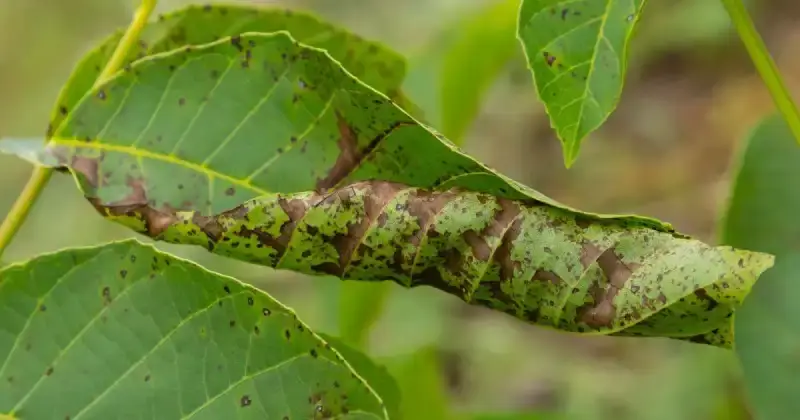
Let’s dive deeper into some of the more severe fungal diseases most growers will face at some point in their gardening journey.
Black Spot
Black spot is easy to identify because of their characteristic dark spots that typically appear on the upper part of the plant’s foliage. There may also be noticeable yellowing or browning discoloration and mottled or blotchy areas that appear on the leaves. However, these spots and discoloration emerge, they generally appear on the plant’s lower leaves first and work upwards as the affected vegetation begins to fall off and litter the soil below.
Blight
Blight is a prevalent fungus in all soils and may be the most common fungi you’ll encounter at some point in your gardening career. Characteristic identifiers of earthly blight are dime size (or smaller) with the appearance of brown, tan, or bronze spots along with yellow edges of the leaves. As the disease progresses throughout the plant, the stems and fruits will similarly have dark mushy spots indicative of urgent care and intervention.
Powdery Mildew
Powdery mildew is easily identifiable as it has a distinct, refined, white, and powdery appearance on the surface of the leaves it infects. It usually begins on the upper leaves in spots and patches and quickly spreads, engulfing the entire plant and other nearby vegetation with a dusty white residue. The leaves will wither and, if left untreated, become yellow and die as they become infected with the fungus. 3
Powdery mildew can appear on the plants in your garden even when strict watering methods are followed. This fungus doesn’t need a film of water resting on your leaves to take hold. Instead, these fungi thrive in higher humidity and crowded garden areas with little air circulation.
Downy Mildew
Downy mildew is a fungal infection that often affects cucurbit plants such as cucumbers and melons. Yellow spots develop on the tops of the leaves and turn brown as the disease progresses. In climates with high moisture or humidity, a dark purple and grey fuzz can begin to grow on the underside of the leaves, spreading rapidly. 4
Wilt
Wilt disease afflicts many vegetable varieties, including tomato, potato, eggplant, and more. With wilt, you will notice the yellowing of leaves and even some curling foliage. Left untreated, leaves will eventually die, with some turning brown and falling completely off the plant.
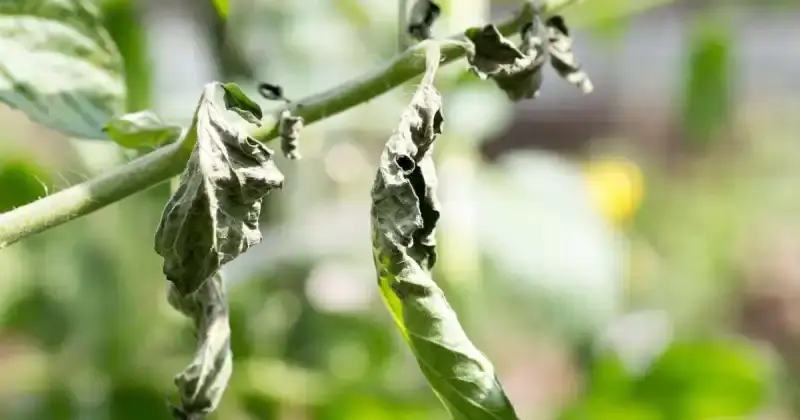
Clubroot
Clubroot is a soilborne fungus that infects plants in the cabbage family. Characteristic clues that indicate an outbreak of clubroot in the garden include yellowing leaves and wilted, stunted plants with swollen and thick irregular club-shaped roots.
Anthracnose
The anthracnose fungal disease affects cucurbits and causes dark, sunken patches and spots across plants’ leaves, stems, flowers, and fruits. Some of these lesions can even develop pink or salmon-colored spores causing havoc within your garden.
What Are The Top Natural Antifungals For Soil
There are several excellent natural and store-bought options that help treat harmful fungi in your garden soil. Whichever option you choose, whether it’s baking soda, hydrogen peroxide, or store-bought fungicide, it’s important to remember to apply them before problems arise, not when you first see them. This practice is especially true if you’ve had prior fungal issues within your growing space.

Below are several effective antifungal sprays and processes to keep your plants happy and healthy.
Solarize Your Soil Before Planting
Solarizing your garden is an excellent and straightforward method to treat soil if you’ve had an extreme fungal invasion in the previous season. The best time to solarize the troublesome area is when temperatures are highest in summer, and you can maximize the sun’s heat and energy to your benefit.
Check Lowest Prices On Greenhouse Solarizing Sheeting Now
Gently water the affected area and place a piece of greenhouse plastic over the soil, anchoring it with small rocks or stakes. A good rule of thumb when solarizing is to remove the plastic and turn your soil every few weeks to ensure any harmful fungi that may lie deeper within your garden bed are brought up to the surface and treated.
Here’s a video detailing how to quickly solarize your soil if you’ve had a severe fungal issue in your garden. You’ll need greenhouse plastic, a pitchfork, and either earth staples or rocks.
Baking Soda
Baking soda creates a slightly acidic environment that prevents the fungi from colonizing. Mix two tablespoons of baking soda, three drops of dish soap, and three tablespoons of vegetable oil into 1 gallon of water.
Pour this blend into a spray bottle and gently apply it to the leaves of the plants being affected by fungi. This effective homemade remedy does very well against both powdery mildew and blight.
If baking soda is applied, avoid spraying it during the middle of the day or when temperatures exceed 90 degrees. When using baking soda during these warmer temperatures, you risk damaging your plant.
For better results and less risk, apply baking soda or any of the below antifungal options during the cooler parts of the day, typically in the morning or evening. By treating your plants this way, you’re providing enough time for the treatment to dry before temperatures begin to climb.
Cinnamon Powder
Cinnamon contains antifungal properties beneficial to garden plants prone to fungal diseases. Common ways to utilize cinnamon as an antifungal treatment in your vegetable garden are by sprinkling the cinnamon over the soil around the crops as a preventive or mixing up a cinnamon spray solution to treat diseased plants.
Create a cinnamon tea by bringing a quart of water to a boil and then pouring the water over a tablespoon of cinnamon. Stir the mixture and allow it to steep overnight. Transfer the liquid to a spray bottle and gently spray the affected leaves and stems. Make sure to apply to the upper and underside of the foliage.
Garlic Paste
Garlic is highly antifungal and effectively treats fungal issues that may arise in your growing area. In fact, many gardeners successfully use garlic as an alternative to store-bought fungicides.
In the vegetable garden, you can create a simple garlic paste that can be diluted with water and used as a spray treatment for fighting fungal disease.
Combine two bulbs of minced garlic, one teaspoon of standard dish soap, and two cups of water. Grind the mixture thoroughly and then run it through a cheesecloth or strainer. Store the paste in the refrigerator until needed.
When you’re ready to apply, add one gallon of water to the paste, mix, and transfer to a spray bottle for application on diseased plants.
Apple Cider Vinegar
Another potent antifungal treatment is apple cider vinegar. It only takes a small amount of ACV to treat fungal diseases on almost any plant, so it’s essential to apply it conservatively. Mix one tablespoon of apple cider vinegar with one gallon of water and gently spray any diseased or damaged plants.
A little bit goes a long way when using apple cider vinegar. Although vinegar can effectively treat and kill lurking garden fungi, it can also severely damage the very plants you are trying to protect.
It’s important to remember that if your plants absorb vinegar, it will quickly break down the cell membranes by pulling water out of the leaves. This desiccant process (drying effect) will ultimately result in the death of your crops.
So be sure to use special care if applying ACV.
3% Hydrogen Peroxide
Hydrogen peroxide is another excellent alternative when fighting garden fungus and is approved for indoor and outdoor use. Hydrogen peroxide is safe when used in moderation and properly diluted in water, and it helps your plant’s roots absorb vital nutrients from the soil. Mix one part hydrogen peroxide with four parts water and spray conservatively. 5
Check Lowest Prices On 3% Hydrogen Peroxide Now
Organic Copper Fungicide
Inorganic fungicides such as copper fungicide work in much the same manner as baking soda and can be purchased from a big box store.
These substances work to kill harmful organisms and fungi by denaturing enzymes and other critical proteins. It can also prevent the disease from spreading. However, if you opt for copper fungicide, ensure you do not apply too much, as copper can be detrimental to worm populations within your garden beds if used in excess.
Lastly, some of these inorganic fungicides are even approved for organic gardening, although it’s always best to read the label carefully of the one you ultimately choose.
Check Lowest Prices On Organic Fungicides Now
Sulfur
Sulfur options can be used as a powder or a spray on crops when treating fungal issues. One thing to be aware of with sulfur is that it will change the pH of your plant’s leaves and the soil. As some plants prefer more acid conditions for optimal growing, others alkaline, it’s essential to understand how or if applying sulfur may affect your garden.
Check Lowest Prices On Sulfur Fungicide Now
Here’s a great video detailing all available options for store-bought antifungal items. Some are approved for organic gardening, while others are not. So, determine the severity of fungal spread in your garden appropriately, choose your preferred alternative, and start showing that fungus who’s boss.
Synthetic Fungicides
Synthetic fungicides are my last line of defense. The downside is that they are manufactured chemicals and certainly not approved for organic gardening. However, they are incredibly effective by coating and adhering to the plant while not allowing fungi to attach and damage the leaves.
One thing I wouldn’t do with synthetic fungicides is to apply them directly on fruiting plants as there is a lasting residual of these chemicals that stays on the plant, which may be challenging to get off. Similarly, I would avoid applying synthetics to any leafy green, like lettuce. Instead, I would opt for a more natural or less residual option from the list above, but again the choice is yours.
Check Lowest Prices For Synthetic Fungicides Now
Whether you use natural or synthetic options, always test spray one plant or even one leaf on that plant before applying any additional choice treatment to the rest of your garden. It’s best to see how effective the spray may be within this test area and ensure the plant responds well while not showing any adverse effects to the preferred treatment.
Stopping And Preventing Harmful Soil Fungus In 5 Easy Steps
Although entirely and permanently eliminating all harmful soil fungus from your garden soil is next to impossible, there are some simple and effective ways to mitigate or prevent the damage that it can cause.
- Treat your garden BEFORE signs of fungus appear.
- Remove the diseased plant and debris from your garden space.
- Change environmental conditions within your garden.
- Don’t overfertilize your garden.
- Rotate your crops.
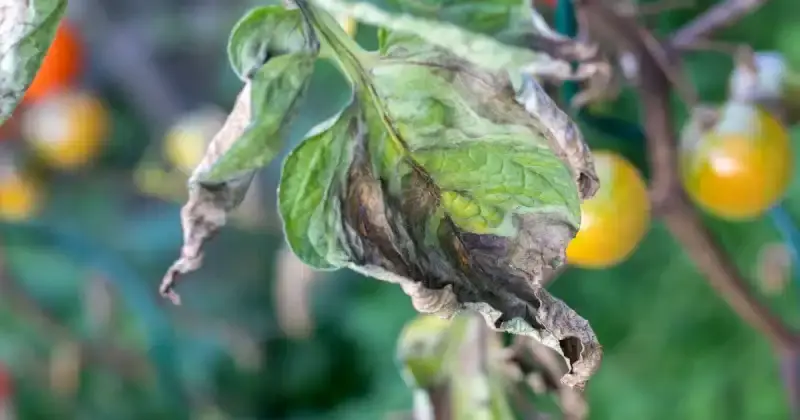
Remember, the best defense to fighting fungus is having an effective offense. So, to beat back harmful garden fungi, you’ll need to be observant, proactive, and take some easy but necessary preventative measures that ensure your crops stay safe and healthy.
Let’s take a look at each of these five crucial steps.
Treat Your Garden Before Signs Of Fungi Start Showing
Prevention is an excellent method to deter fungus from taking over your edible Eden in the first place. Keep a garden calendar and track the times of the year and the environmental conditions (i.e., temperature, moisture) present when fungus begins to attack. 6
You’ll give yourself an advantage over harmful fungi by providing a baseline of when you can begin treatment with anti-fungal sprays. A week or two before plants are typically affected for your region and climate is the best time to start routine treatment with a natural antifungal spray.
Check Lowest Prices On Garden Journals Now
Get into a routine when applying your antifungal treatments. It may be every seven days, ten days, or every three days depending upon your climate and fungal conditions.
What you want to avoid is to spray once or twice and think your you’ve solved the problem. Hardly is anything a one-and-done treatment in the vegetable garden, and antifungal treatments are no different.
Remove the Infection by Removing the Affected Plant
Because fungal diseases can spread easily and quickly, removing diseased foliage and badly damaged plants from the garden is an excellent habit. If a plant is only showing minor signs of disease, then treatment can be applied with a watchful eye on the progression of the disease. However, if the plant is badly damaged and the fungi begin to spread to other nearby plants, it may be time to pull up the entire plant and dispose of it completely.
Some gardeners even suggest avoiding composting diseased plants because of the risks of re-introducing fungus back into your garden’s soil. I tend to agree with this logic and follow this same advice in my own garden to help reduce the risk of “contamination” within my compost pile.
Aside from removing the affected plant, it’s also good practice to clean up all yard debris at the base of the plant. Any diseased leaves or small branches that may have succumbed should also be discarded.
Likewise, remove all garden debris at the end of each growing season to lessen the chances of harmful fungi finding an advantageous foothold in your growing space.
Change The Environmental Conditions
Depending on the fungal variety attacking your plants, you may need to change the time of year you plant. Some fungi thrive in moist and cool conditions, while others thrive in wet and warm conditions.
For example, early blight can be avoided by planting tomatoes later in the growing season. However, blight proliferates in cool and damp conditions; therefore, it can be detrimental to plant your tomatoes too early in the year.
Research and determine what common conditions allow particular fungi native to your region to flourish. The goal is to avoid these favorable conditions within your garden and to instead plant at times and in areas that are less conducive to fungi colonization.
As mentioned above, the best way to water your garden is by soaking the soil while avoiding contact with the leaves and stems of your plants. If your present watering routine includes aggressively drenching the plant from top to bottom and calling it a day, consider a different approach for your plants’ health.
Instead, gently water at the very base of the plant to avoid getting soil and water on the actual plant itself. Keeping the plant dry and clean from both water and soil particles will help prevent the spread of disease.
Don’t Overfertilize
Although extra feedings may encourage the health of your garden, using too much fertilizer can have detrimental effects on your plants, one of which is increasing the growth of harmful fungi.
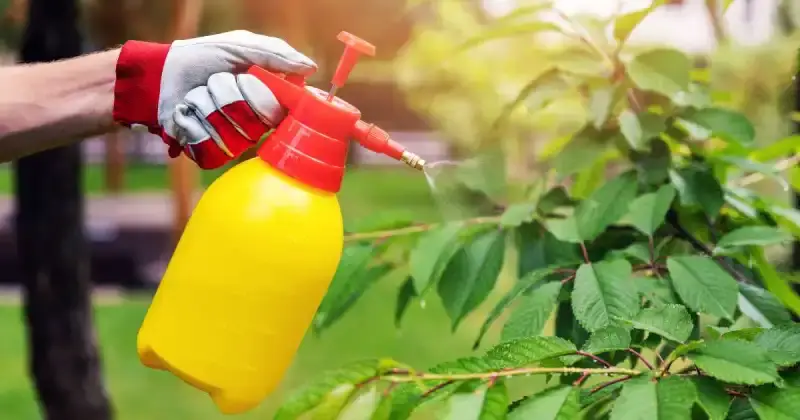
Too much fertilizer can unbalance your garden’s natural relationship with nature and disrupt the delicate soil ecology, something your crops won’t tolerate well. It can also lead to the expedited growth of harmful fungi.
Also, be especially careful to avoid infusing your soil with too much nitrogen, as excess nitrogen may increase fungal pathogens. Therefore, I recommend regularly testing your soil for this very reason which can help determine the levels in your garden.
Check Lowest Prices On Soil Testing Kits Now
Rotate Your Crops
If harmful fungi have already made their way into your garden from past seasons, they will likely make another appearance. It may only be a matter of when.
So, to make it harder for fungi to make their dramatic reappearance, rotate your crops so the hidden fungi in your soil won’t pop up on the same plants they previously attacked. 7
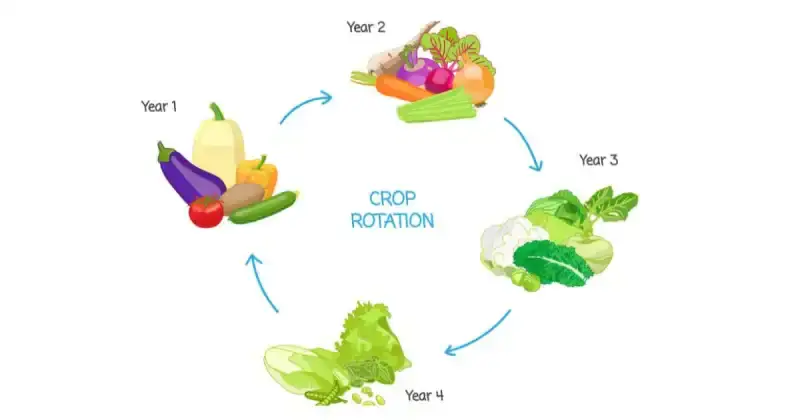
I learned this lesson the hard way in my own garden when powdery mildew appeared on my cucumber plants two years running. However, after some diligent research, I rotated my cucumber crop to another spot the following year without issue, proving that sometimes a simple move is all it takes to combat fungi effectively.
Conclusion
Although fungi are always present in the air we breathe and the soil under our feet, preventing it in your garden can be accomplished through various methods. Your goal as an effective gardener is to create a garden teeming with beneficial bacteria.
Fortunately, when harmful fungi show up in your garden, plenty of natural and synthetic ways help you fight back. Baking soda and hydrogen peroxide are staples in the seasoned gardener’s toolkit in keeping harmful fungi to a minimum. Solarizing your garden is another natural way for Mother Nature to heat and treat your soil, taking only a few minutes.
Simple methods like removing the affected plant and its debris from your garden are wise and practical decisions any gardener should undertake. Likewise, keeping your garden “clean” and free of deposited foliage after each growing season are additional methods any good grower should do to keep fungus from finding a weak point.
Finally, you can resort to synthetic, manufactured fungicides that have their place if nothing else has worked or if the fungal invasion is spreading too rapidly. However, with synthetic options comes harsher chemicals that will leave a residual on your plants and leaves. Be sure to read and follow the instructions of each during their use.
Have you had harmful fungi invade your garden? What did you use to fight back? Meet me in the comments below and let me know!
SOURCES
- Michigan State University, Extension Field Crops – Signs And Symptoms Of Plant Disease: Is It Fungal, Viral Or Bacterial?
- Cornell University, College Of Agriculture And Life Sciences – Copper Fungicides For Organic And Conventional Disease Management In Vegetables
- National Library Of Medicine, National Center For Biotechnology Information – Powdery Mildews Are Characterized By Contracted Carbohydrate Metabolism And Diverse Effectors To Adapt To Obligate Biotrophic Lifestyle
- The American Phytopathological Society – White Mold (Sclerotinia)
- The Royal Society – Species Decline Under Nitrogen Fertilization Increases Community-Level Competence Of Fungal Diseases
- Frontiers – Common Mycorrhizae Network: A Review Of The Theories And Mechanisms Behind Underground Interactions
- Wikipedia – Downy Mildew


